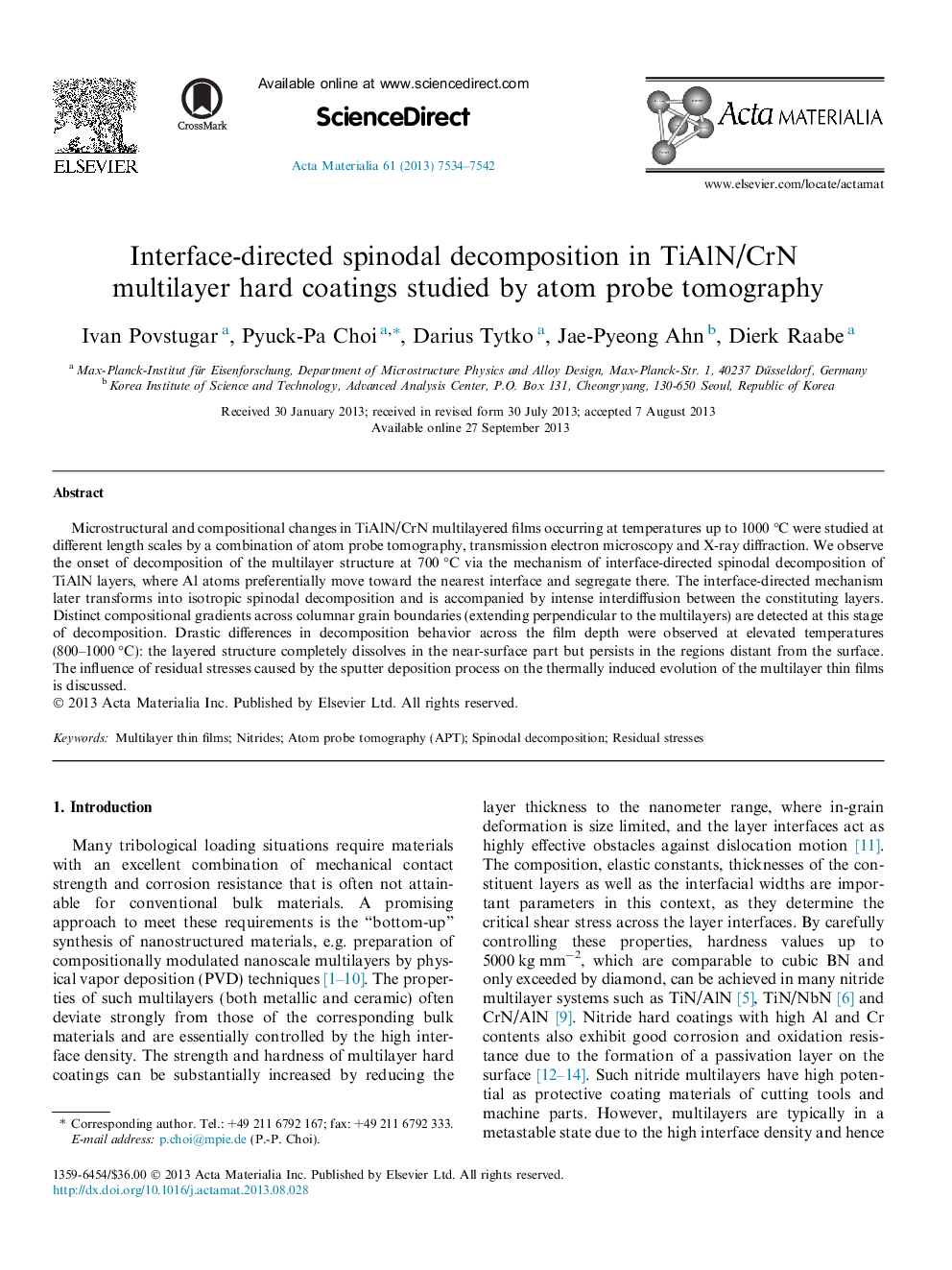| Article ID | Journal | Published Year | Pages | File Type |
|---|---|---|---|---|
| 1446175 | Acta Materialia | 2013 | 9 Pages |
Microstructural and compositional changes in TiAlN/CrN multilayered films occurring at temperatures up to 1000 °C were studied at different length scales by a combination of atom probe tomography, transmission electron microscopy and X-ray diffraction. We observe the onset of decomposition of the multilayer structure at 700 °C via the mechanism of interface-directed spinodal decomposition of TiAlN layers, where Al atoms preferentially move toward the nearest interface and segregate there. The interface-directed mechanism later transforms into isotropic spinodal decomposition and is accompanied by intense interdiffusion between the constituting layers. Distinct compositional gradients across columnar grain boundaries (extending perpendicular to the multilayers) are detected at this stage of decomposition. Drastic differences in decomposition behavior across the film depth were observed at elevated temperatures (800–1000 °C): the layered structure completely dissolves in the near-surface part but persists in the regions distant from the surface. The influence of residual stresses caused by the sputter deposition process on the thermally induced evolution of the multilayer thin films is discussed.
